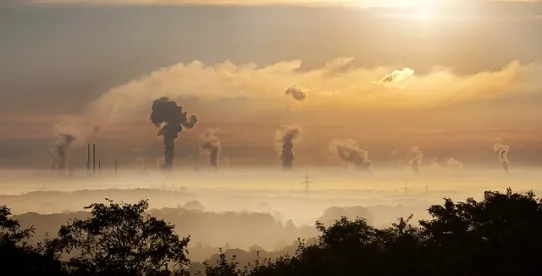In his campaign for President, Donald Trump promised to withdraw the United States from the Paris Agreement and vowed to eliminate greenhouse gas (GHG) emission regulations. Assuming Trump seeks to fulfill these pledges, what steps will his administration take starting in January? There is significant uncertainty about what Trump will do, but it is possible to identify a set of pathways that his administration is likely to consider.
Because the United States joined the Paris Agreement by means of an executive action, it is possible that another executive action would be sufficient to withdraw the United States as a party. Alternatively, the Trump Administration could follow the Agreement’s formal procedures for withdrawal by providing written notice any time after three years from the date (November 4, 2016) that the agreement entered into force. If the Trump Administration opted instead to continuing participating in the Agreement, it might issue a revised Nationally Determined Commitment (NDC) for the United States, which would reflect a more modest set of domestic GHG reduction measures than the reduction measures submitted by the Obama Administration in the original U.S. NDC.
On the domestic side, a Trump Administration will face a relatively high hurdle in avoiding any GHG regulation altogether. Given the Supreme Court’s decision in Massachusetts v. EPA, the Trump Administration could avoid Clean Air Act regulation of GHGs for power plants or other source categories only if the EPA made a new scientific determination that GHGs do not endanger public health or welfare—and only if the agency could defend that determination in the courts. The Obama EPA made various types of endangerment findings in support of different rules to regulate GHG emissions.
 If reversing the endangerment findings proves too high a mountain to scale, a Trump Administration likely would explore ways of unwinding or scaling back Obama Administration policies in favor of different approaches. This approach would involve revisiting significant GHG regulations promulgated by the Obama Administration, i.e., the regulations affecting the power sector, the transportation sector, and the oil and gas sector.
If reversing the endangerment findings proves too high a mountain to scale, a Trump Administration likely would explore ways of unwinding or scaling back Obama Administration policies in favor of different approaches. This approach would involve revisiting significant GHG regulations promulgated by the Obama Administration, i.e., the regulations affecting the power sector, the transportation sector, and the oil and gas sector.
Both of the major power sector rules—the Carbon Pollution Standards for new power plants and the Clean Power Plan Rule for existing power plants—are currently subject to litigation. A Trump Administration likely will not have an interest in defending the rules and consequently will take legal steps to reconsider and revise or even repeal the rules. However, the effectiveness of such actions is unclear given that other parties that intervened on the side of the government will seek to continue to defend the rules in court.
If the courts uphold the rules before they are revoked, a Trump Administration may need to modify them. For the Carbon Pollution Standards rule, a Trump EPA might rewrite the emission standard for new coal-fired power plants so that the standard is no longer set at a stringent CO2 emission performance level that is based on the use of carbon capture and sequestration (CCS), but instead is based on the use of advanced, highly efficient coal generation technology. Similarly, a Trump EPA might take a number of approaches in revisiting the Clean Power Plan rule. For example, the Trump EPA could reverse the agency’s current statutory interpretation of its authority under Section 111(d) and conclude that Section 111(d) bars the EPA from promulgating an emission guideline for a source category already subject to regulation for its air toxic emissions under Section 112 of the Clean Air Act. This new interpretation could effectively foreclose use of Section 111(d) not only to set GHG standards for the power sector but also to set GHG standards for the many other industrial source categories already subject to toxic emission standards.
Alternatively, the EPA could revisit the “Best System of Emission Reduction” methodology it used to establish emission guidelines under the Clean Power Plan Rule. Under this pathway, the Trump EPA would abandon the “generation-shifting” approach that was used to set performance standards based on renewable energy and other measures that can be implemented beyond the fence‑line of an affected power plant. Instead, the performance standards would be set at a level that assumes only those reductions achievable through measures that can be implemented at a plant. At the same time, the agency could continue to recognize the discretion of states to authorize compliance through emissions trading and other flexible approaches. The result would be a program with less stringent obligations and lower costs of compliance.
With respect to the transportation sector, a Trump EPA might use the 2018 mid-term evaluation of the fuel economy and GHG emission standards for passenger vehicles and light-duty trucks to raise serious questions as to whether the stringent standards for MY2021-2025 are appropriate given the latest available data and information. Under such a scenario, the State of California likely would move forward with GHG emission standards that are as stringent as, or more stringent than, the current MY2021-2025 federal standards. However, the State might need a waiver from the Trump EPA under Section 209 of the Clean Air Act to take such steps. It is also possible that the Trump EPA would revisit the more stringent standards recently promulgated for on-road heavy duty trucks. This step would likely require the kind of notice-and-comment rulemaking described above.
In the oil and gas sector, a Trump EPA might revisit (through a rulemaking) the methane standards promulgated by the Obama Administration for new and modified facilities under section 111(b) of the Clean Air Act – possibly by determining that the quantity of methane emissions from the oil and gas sector are not substantial enough to endanger public health and welfare. By revoking the section 111(b) rule, the Trump Administration could avoid an obligation to follow through with regulation of methane emissions from existing facilities under section 111(d) of the Clean Air Act.
Implementing these revisions would require EPA to undertake new notice-and-comment rulemakings. In such rulemakings, EPA would have to supply a “reasoned explanation” to support changing course on the extensive legal and technical judgments finalized during the Obama Administration. See Motor Vehicle Mfrs. Ass’n v. State Farm Mut. Auto. Ins. Co., 463 U.S. 29, 57 (1983) (“An agency’s view of what is in the public interest may change, either with or without a change in circumstances. But an agency changing its course must supply a reasoned analysis.”) If there are any court decisions on EPA rules currently subject to litigation, those decisions could either ease or complicate the effort to meet this burden. In any event, there would be robust legal challenges from states and environmental groups that had supported the rules as promulgated by the Obama Administration.
Given Republican control of both the Senate and the House, the Trump Administration might also have a pathway through the Congress to block or shape the implementation of climate change policies developed by the Obama Administration. The President’s allies in Congress could include riders in the budget that would prevent the Executive Branch from spending money on climate change policies or that would repeal or reform those policies. To expedite congressional action, the Congress could pass the budget through the “reconciliation” process, which would eliminate the possibility of a filibuster in the Senate.
It is also conceivable that a Republican Senate would do away with or limit the filibuster rule for legislation, which would open the door to even more sweeping changes, including amendments to the Clean Air Act that could remove or curtail authority to regulate GHGs or other pollutants.



 />i
/>i

